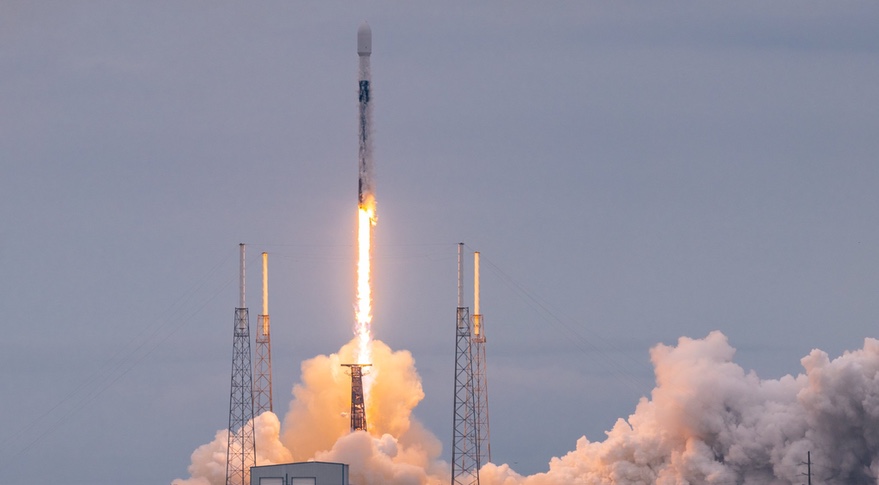SpaceX launched the fourth in its series of dedicated rideshare missions recently, placing one relatively large satellite and dozens of smallsats into low Earth orbit.
The Falcon 9 lifted off from Space Launch Complex 40 at Cape Canaveral Space Force Station. SpaceX beat predictions of poor weather, with just a 30% chance of acceptable weather projected the day before liftoff. However, conditions improved in the hours leading up to liftoff to allow the launch to proceed.
The rocket’s booster landed on a droneship in the Caribbean near the Bahamas, because of the southerly trajectory taken the booster, at almost the exact time the upper stage reached orbit. That booster was on its seventh flight, having previously launched two NASA commercial crew missions, one commercial cargo mission, NASA’s IXPE astronomy satellite, the SXM-8 radio satellite and one set of Starlink satellites.
The upper stage initially entered a sun-synchronous orbit at 650 kilometers, deploying three satellites, then maneuvered to 500 kilometers using two additional burns of the upper stage engine before deploying the remaining payloads.
The mission, called Transporter-4 by SpaceX, was the fourth in a series of dedicated rideshare missions designed to carry large number of smallsats at relatively low prices. Unlike the previous three, which in some cases carried more than 100 satellites, SpaceX said there were only 40 satellites on this mission.
One reason for the smaller number was the size of one of the payloads, EnMAP. The satellite, whose name stands for Environmental Mapping and Analysis Program, weighed nearly 1,000 kilograms at launch. Built by OHB for the German space agency DLR, EnMAP carried a hyperspectral instrument for environmental studies.
“With the launch of EnMAP, Germany is making an indispensable contribution to climate protection. Its innovative hyperspectral sensor technology will really let us see Earth with different eyes,” Anna Christmann, federal government coordinator for German aerospace policy, said in a DLR statement. “With EnMAP, Germany is making an important contribution to European space technology for the benefit of our planet.”
It also marks the second time this year that a European government has turned to SpaceX, rather than Europe’s own Arianespace, to launch a satellite. A Falcon 9 launched Italy’s Cosmo-SkyMed Second Generation 2 radar imaging satellite Jan. 31. The Italian space agency ASI said it selected SpaceX to launch that satellite because of delays with the Vega C rocket.
The remaining payloads on Transporter-4 were smallsats more like the ones flown on the first three Transporter missions. Swarm, for example, flew 12 of its tiny SpaceBEE satellites, each a quarter of a single-unit cubesat in size, weeks after flying a set on an Astra Rocket 3.3 launch.











